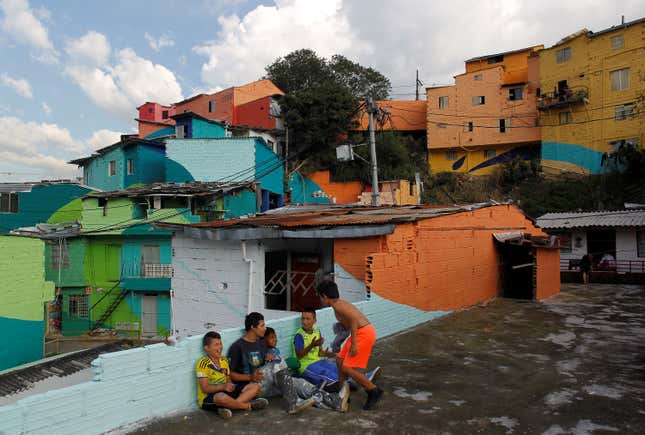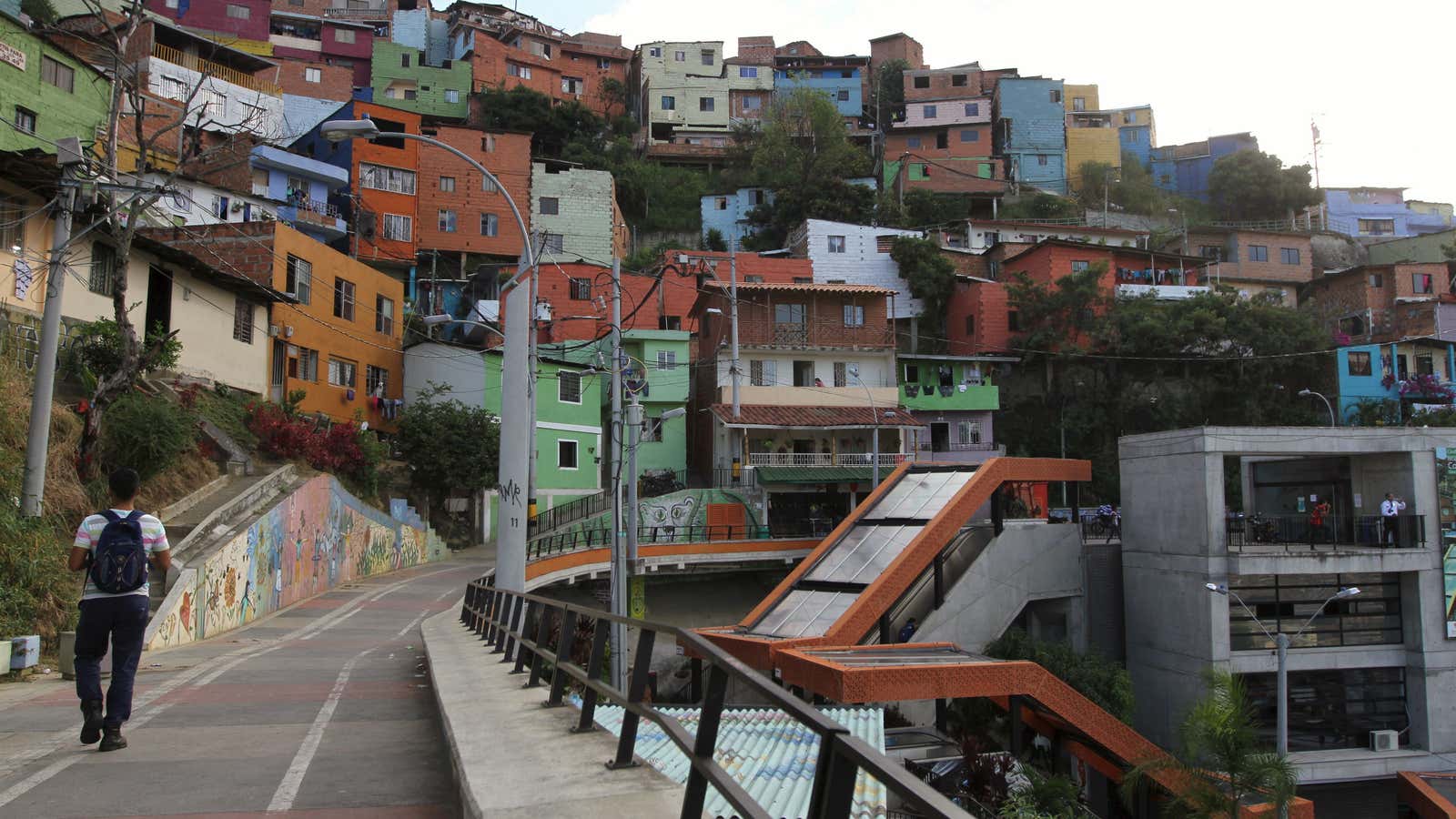This story is part of What Happens Next, our complete guide to understanding the future. Read more predictions about the Future of Cities.
The biggest challenge for cities will be managing the explosive growth of their peripheries. Whole areas of informal neighborhoods are growing in many urban centers in Africa, Asia, and Latin America—and human exclusion is growing with them.
In the coming decades, urbanization will be principally absorbed by cities in developing countries. It’s estimated that by 2030, 80% of the world’s urban population—equal to 4 billion inhabitants—will reside in the cities of Asia, Africa, and Latin America. One in every three will live in informal neighborhoods, and these city sectors generally tend to coincide with the ones that generate inequality, exclusion, and violence.
Thirty percent of Latin America’s population already lives in informal settlements. The way local governments manage these expansions will determine the shape and tone of the communities of tomorrow. But we don’t have to wait for decades to see the results of these spiraling inequalities. For an example of how the cities of the future could successfully adapt to these pressures, we should turn our gaze to Colombia.
Medellín is a case study for a way to innovate, develop new institutional forms, and increase local capacities for growing global populations. Transformation of public space has been integral to regaining the trust of the population of Medellín; design and architecture are powerful tools in the social urbanism strategy. This has included the physical transformation and creation of new meeting points, parks, and public transport systems, such as the integrated cable cars that connect the neighborhoods of the northern part of the city to the metro area.

It didn’t always look like this. Fifty years ago, Medellín looked like many small modern cities of today. But between the 1950s and the 1990s, Medellín experienced a dramatic increase in population. Fleeing violence in rural Colombia, hundreds of thousands of people were displaced and sought refuge in bigger cities. As a result, Medellín’s metropolitan area grew from 350,000 inhabitants to 3 million in just 40 years.
As Medellín was unequipped to deal with this sudden influx of low-income families, slums quickly began to form on the outskirts of the city. Many of these informal settlements suffered from a lack of transportation, public services, and access to education. The result was a broken metropolis with unequal territories, even more marginalized and disconnected than it was before.
During the 1980s, the sudden appearance of drug cartels—combined with the city’s spatial inequity—produced a deep crisis. Territorial violence was localized mainly in these informal neighborhoods on the periphery of Medellín. These social conflicts manifested themselves in the urban space, localized and critical in the most precarious neighborhoods in the north. The inequity, exclusion, and violence festering for decades had turned Medellín into a time bomb, and now it had exploded public space and life in the city.
Society reacted to the crisis and began to attempt to heal itself. In the 1990s, a new form of leadership emerged with new answers and novel ideas. The most significant process was the national government’s initiative “La Consejería para Medellín.” This department was where many future leaders met to start a dialogue and propose innovative solutions.
The Consejería’s actions formed the foundation for the “social urbanism” strategy that was later developed and successfully implemented: The municipal government concentrated on social-impact programs through new services and high-quality buildings, as well as new infrastructure and urban projects that connected the neighborhoods with the city’s urban life.
Medellín is now a live laboratory of new social, educational, and cultural programs, as well as being home to many urban transformations designed to connect and improve inequity. However, even though there has been a clear and real change, transformation and social inclusion are still fragile. A city cannot be built and then left to crumble. There are still many years of continuity in public policy and governmental programs needed to sustain Medellín—or any future metropolitan city—through the next phase of its growth.
This story is part of What Happens Next, our complete guide to understanding the future. Read more predictions about the Future of Cities.
